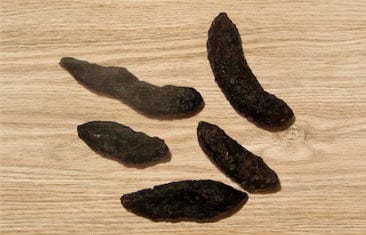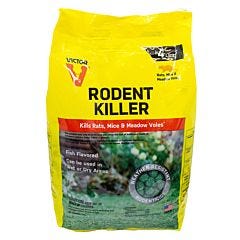Droppings
Search for Mouse Poop
The droppings mice leave behind communicate information to other mice, but they can also help you identify your specific problem and guide your selection of the most effective traps.
You may have noticed mouse poop, the little dark fecal pellets left behind by rodents, in your kitchen, bathroom or elsewhere in your home. Look around your basement, attic, garage, shed or barn for more signs of droppings. You'll notice that even a small population of mice can produce thousands of droppings in a short period of time.
An inspection of mice droppings provides you with valuable information that helps you figure out which pest you have, how big the problem is and, most important, how to trap the rodents fast.
Pest Identification
There are slight but significant differences in the characteristics of rodent droppings. Here are details that will help you determine what sort of pest problem you have.

Mouse
Qty: 50 to 75 pellets daily
Size: ¼ inch long
Shape: Small with 1 or both ends pointed

Norway Rat
Qty: 40 to 50 pellets daily
Size: ¾ inch long
Shape: Larger, rectangular with blunt ends
Found in small groups

Roof Rat
Qty: 40 to 50 pellets daily
Size: ½ inch long
Shape: Larger, curved, sausage-shaped with pointed ends
Found scattered
Age of Droppings
Fresh droppings are dark in color and soft in texture, but after three days they harden and lose the dark color. The age of mice droppings tells you how recently the rodents have been to the spot where you see them.
Size of Infestation
This one is pretty simple - the more droppings you have...the larger your infestation, which will help you determine your approach for rodent control.
Once you know which pest and how many you have, choose Victor® traps to catch mice and rats fast.




